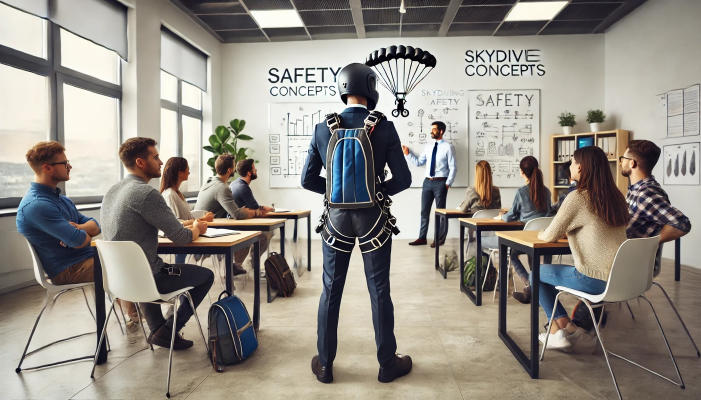
Teaching, like skydiving, requires preparation, situational awareness, and, most importantly, a strong safety net. Just as a skydiver puts their life in the hands of their gear, an educator must place their students in a supportive and safe environment.
It’s astonishing how the maintenance and use principles stemming from skydiving can easily be applied to safety and preparedness in the classroom. It doesn’t matter if you are acquiring items from a skydiving gear shop or preparing for a new school year. Having the correct equipment and plans in place makes all the difference.
Today, we present six key safety insights instructors can learn from skydiving gear.
1. You Should Always Have a Backup Strategy to Follow
In case of a primary parachute failure, skydivers fall back on a reserve parachute. In the same vein, teachers need a backup lesson plan and a plan for potential disruptions and emergencies. Having an alternative solution for problems such as sudden technology glitches or unexpected behavior challenges can prevent panic while maintaining the ethos of learning.
2. Standard Inspections Can Prolong a Catastrophe
Skydivers check their gear for any signs of wear and tear before every jump. Educators need to do the same with lesson plans, emergencies, and any potential dangers lying around the classroom. If small problems go unchecked for long, they can lead to bigger repercussions waiting to occur.
3. Proper Training Saves Lives
Just like how a professional skydiver completes a comprehensive training regime in advance of their jump, instructors in a classroom need to know the appropriate safety protocols. Emergency procedures, conflict de-escalation, and drill practices all aid greatly in student safety.
ALSO READ: 4 Educational Benefits of Timbersled for Adventure Enthusiasts
4. Communication is Key
Clear communication and the use of hand signals ensure each skydiver proceeds with their jump in the correct manner. Having strong interpersonal relationships between students and faculty is equally important within a classroom.
It prompts secure environments with fewer chances of issues surfacing. Trust and risk are both fostered and decreased, respectively, when dialogue and instructions are openly provided.
5. Secure Equipment, Secure Mindset
While the skydiving suit and accessories are tailored to offer a complete safety net for the jumper, it is only effective when worn correctly. In a classroom, teaching aids such as first aid kits, emergency exits, and drills all have the same prerequisite: they must be understood and appropriately used by both students and their guardians.
Spaces that are devoid of anxiety and clutter augment focus, and fostering kids in prepared classrooms is one way to achieve that.
6. Remain Calm in Crisis Situations
Even when the equipment breaks down, a skydiver will have calm composure. Like an instructor, a skydiver must remain calm and collected during conflicts, eruptions, or emergency situations. Providing limitless calm helps greatly in assuring students and coping with issues arising that need to be managed.
Conclusion
Though teaching and skydiving may differ in many aspects, both require preparation, safety, the proper surroundings, and an equipped environment. Following these six lessons from skydiving gear, teachers can ensure that the classroom environment is focused on students’ safety and preparedness to tackle any challenges.
Students should be able to trust their instructors just as skydivers depend on their parachutes.
